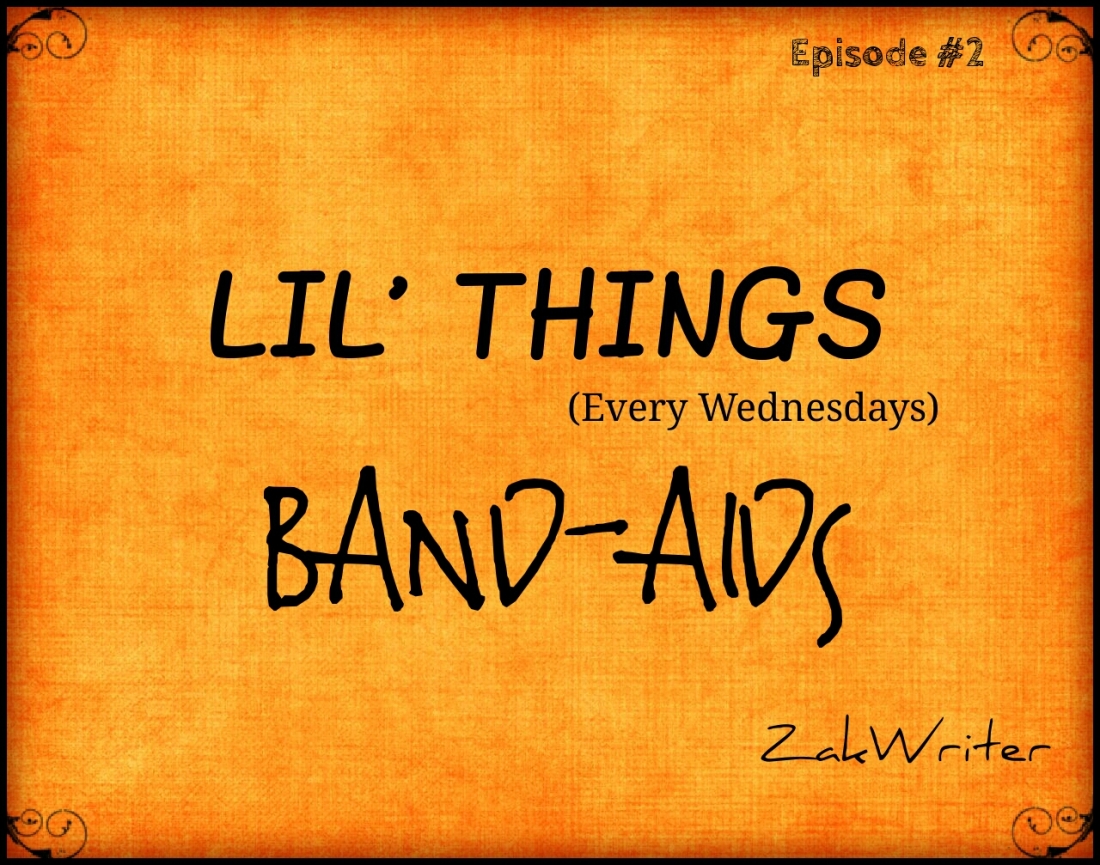Mangoes. Mangoes are a source of nostalgia for many of us. When we see a mango we automatically go to our childhood days. Those days we spend in our mom’s house. Running around and playing with cousins. Those were the best days. Grandma would tell us interesting stories, when we kids sat around her. And the best part is watching her slice those juicy mangoes.
Ouch! While you were floating in your nostalgic memories, you forgot that you were slicing a mango. Luckily, the cut on your finger is not a bad one. But, you see blood oozing out. You panic (Panicking won’t help you). You rush to the nearby store. The shopkeeper, Arthur, exactly knows what you want. He keeps ‘it’ in from of you and says, “There you go”. What is ‘it’? A Band Aid. The solution to your problem.
We have spent hours studying about the famous inventions made by scientists. Thomas Alva Edison’s light bulb, Wright Brothers’ Aeroplane, Newton’s Laws, Einstein’s Laws, etc. But there are so many Lil Things in our world that we don’t think about. I would like to talk about 26 such Lil Things. From A-Z. Hope it will be interesting.
Today, we will be talking about BAND-AIDS.

First of all Band-Aid is not a thing. Band-Aid is a brand name of American pharmaceutical and medical devices giant Johnson & Johnson’s line of adhesive bandages. Adhesive bandages is the actual name for the thing that you stick on small cuts, but due to some unknown reasons most of us call it ‘Band-Aid’.
What is a Band-Aid/ an Adhesive Bandage? An adhesive bandage, also called a sticking plaster (or simply plaster) in British English, is a small medical dressing used for injuries not serious enough to require a full-size bandage. They are also known by the genericized trademarks Band-Aid (as “band-aid” or “band aid” in the US) or Elastoplast (in the UK).
Now, let’s talk about the origin of adhesive bandages. It has got a small story behind it.
In 1920, a newly wed woman, Josephine Dickson, was living in New Brunswick (New Jersey) with her husband Earle. A cotton buyer at Johnson & Johnson, Earle came home every night to find dinner on the table courtesy of his loving wife Josephine. She worked hard to keep their home beautiful; and sometimes suffered for her work by getting cuts or minor burns on her fingers. Since adhesive bandages were not available at the time, Earle and Josephine would cut pieces of adhesive tape and cotton gauze to make bandages of their own. This became rather time consuming. They were in a real bind.
Finally, Earle hit upon an idea. He sat down and prepared some ready-made bandages by placing squares of cotton gauze at intervals along an adhesive strip and covering them with crinoline. Now all Josephine had to do was cut off a length of the strip and wrap it over her cut. In a way, it was a mother who was responsible for the invention of the adhesive bandages.
Earle soon told his boss at work about his new invention and soon the first adhesive bandages were being produced and sold under the world famous BAND-AID® trademark. Earle was eventually rewarded with a position as Vice President in the company, where he stayed until his retirement. Josephine, and countless other American housewives, now had plenty of BAND-AID® Brand Adhesive Bandages available for any instance. Earle Dickson may not have realized what a cutting edge product he was inventing, but it certainly stuck around. (Story taken from http://www.band-aid.com).
Now it is easy to understand why most people use the word ‘Band-Aid’ instead of the word ‘Adhesive Bandages’.

At first Band-Aids were handmade and were not so popular. In 1924, Johnson & Johnson invented a machine that produced sterilized Band-Aids.
You might have seen decorated Band-Aids. Band-Aids with different themes like Spiderman, Mickey Mouse, Barbie, etc. It was in 1951 that such decorated Band-Aids came into the market. They continue to be a commercial success.
Few years later, coloured Band-Aids were introduced. Colours like brown, light brown, dark brown, etc were used. This colour system was introduced so that the Band-Aids could match the skin colour tone of the user.
Since The World War II, Johnson & Johnson currently has estimated a sale of over 100 billion Band-Aids worldwide.
Now let’s talk about the materials of a normal band-aid. The outer covering is made of coated paper or sometimes plastic. The adhesive sheets are usually a woven fabric, plastic, or latex strip. The absorbent pad is often made of cotton, and there is sometimes a thin, porous-polymer coating over the pad, to keep it from sticking to the wound. The pad may also be medicated with an antiseptic solution. Water proof Band-Aids and other varieties are also being produced.
Along with Band-Aid Elastoplast, Nexcare and Curad are other noteable adhesive bandage brands.
That’s it. That’s all you need to know about Band-Aids. I would like to thank Mr. Earle Dickson for saving our lives. Sources – Wikipedia and band-aid.com.
Read the previous episode of Lil’ Things here – https://zakwriter.wordpress.com/2016/05/04/lil-things-ep-1-autographs/
